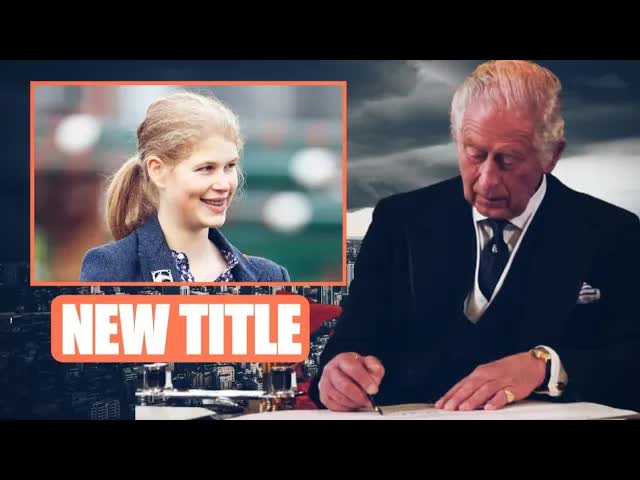The Eternal Dilemma**
Lady Louise Mountbatten-Windsor, the youngest granddaughter of Queen Elizabeth II and Prince Philip, marked a significant milestone as she celebrated her 20th birthday.
Despite being part of the British Royal Family, Lady Louise is currently focused on her studies at the University of St Andrews, with graduation still a few years away.
While the prospect of her becoming a working member of the Royal Family remains uncertain, there is ongoing controversy surrounding her title.
The spotlight has recently shifted towards a 1917 patent that has reignited discussions about Lady Louise’s potential to one day hold the title of princess rather than lady.
This historical document, issued by King George V during the tumultuous period of World War I, outlined the criteria for royal titles, a topic that had been shrouded in obscurity for over a century.
King George V’s decisions regarding royal titles were met with criticism and were largely overlooked by the public for many years.
However, the resurgence of interest in these rules has raised questions about whether Lady Louise could eventually be bestowed with the title of Her Royal Highness, a distinction that holds significant importance within the monarchy.
The rules established by King George V stipulate that the children of a monarch’s son automatically receive the title of prince or princess, while the same privilege does not extend to the descendants of a monarch’s daughter.
This gender-based distinction has been a point of contention, especially in today’s context where gender equality is a prevalent issue.
Lady Louise’s lineage adds a layer of complexity to the discussion.
As the daughter of Prince Edward and Sophie, Countess of Wessex, her position within the royal hierarchy is unique.
Following Prince Edward’s marriage to Sophie Rhys-Jones in 1999, Queen Elizabeth II made a deliberate decision that their children would not be styled as His or Her Royal Highness.
The decision to forego royal titles for Prince Edward’s children was made in the aftermath of Princess Diana’s death and the subsequent public scrutiny faced by the royal family.
This choice positioned Lady Louise as Lady Louise Mountbatten-Windsor, distinct from the traditional titles associated with royal lineage.
As the debate surrounding Lady Louise’s title continues, speculation abounds about her future role within the Royal Family.
With the aging of senior royals such as the Duke of Kent, Princess Alexandra, the Duke and Duchess of Gloucester, and Princess Anne, the need for younger members to take on royal duties becomes increasingly apparent.
Lady Louise’s mother, Sophie, has hinted at the possibility of her daughter embracing a more prominent role in the future.
While Lady Louise has thus far chosen to maintain her title of Lady, the evolving dynamics within the Royal Family suggest that she may be called upon to assume greater responsibilities as the next generation of royals steps into the spotlight.
On her 20th birthday, Lady Louise’s cousin, the Prince of Wales, expressed his commitment to driving meaningful change within society by focusing on key issues.
This emphasis on quality over quantity raises questions about the future direction of the royal family and the roles that its members, including Lady Louise, may play in shaping its legacy.
As Lady Louise navigates the complexities of royal lineage and her own aspirations, the balancing act between privacy and royal duties remains a central theme.
The delicate balance between personal autonomy and public expectations underscores the eternal dilemma faced by individuals born into the royal family – a dilemma that Lady Louise may one day confront as she charts her own path within the monarchy.
